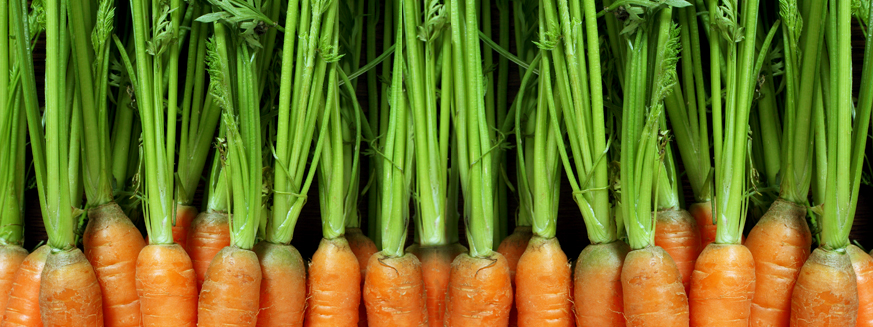The Fresh Blog
Lifestyle, Health, Nutrition & Inspiration from Luvo
Don’t Throw Away the Tops!
As a huge fan of minimizing food waste, I’m always interested in learning about new ways to use various parts of vegetables and other food items that sometimes get thrown away. Squash seeds, citrus rinds, bread ends and other secondary food items often get tossed without being given a chance to fulfill their potentially delicious destinies.
One food blog that I stalk on a regular basis, The Kitchn, recently posted a guide to making use of some common kitchen scraps, but one thing the article didn’t mention is all the wonderful things that can be done with the green tops of your favorite vegetables. The greens that sprout from the top of your beets, the delicate leaves of celery and several others carry subtle hints of their host vegetable’s flavor, and also deliver nutrients to boot. In many cases, the greens of a vegetable plant are actually far more nutritious than the vegetable itself.
Here are some common veggie tops and why you should consider using them instead of throwing them away:
Beet Greens
The dark leafy tops of the beetroot belong to the same category as other greens like spinach and Swiss chard, but for some reason people don’t often think to use them as such. Beet greens are highly nutritious–even more so than beets themselves! They are high in fiber, vitamin A, vitamin C, vitamin B6, vitamin K, magnesium, manganese, potassium, calcium, iron and copper.
Beet greens are quite versatile and can be used raw in salads or sautéed with your favorite seasonings for a nutritious flavor explosion alongside your roasted beets. They can also be frozen and used later in soup stocks. A recipe to try: Sesame Wilted Beet Greens.
Celery Leaves
Celery leaves are a wonderful addition to recipes because of their delicate celery-like flavor and pretty chartreuse color. They are a good source of fiber, calcium and vitamin E.
You can use celery leaves in a variety of recipes. Chop them up and add them to salads, stir them into soups and stews, sprinkle them on top of dishes as a garnish or boost your smoothies with a little added nutrition and fresh flavor. Try this recipe: Celery Salad with Soft Boiled Egg and Shaved Bottarga.
Carrot Tops
Even I didn’t think you could do anything of note with green carrot tops but apparently they are quite nutritious and work well in many culinary applications. An old legend had many people believing they were poisonous, but that’s simply not true. Carrot tops contain many of the same nutritional benefits found among greens, including chlorophyll, potassium and of course, fiber.
With their subtle carrot flavor, you can use leafy carrot tops (skip the tough stems) as a garnish much like parsley, blend them up into pestos or use them to enhance salads. This recipe sounds pretty good to me: Velvety Carrot Carrot Soup with Carrot Top Pesto.
Turnip Greens
Popular in southern cooking, turnip greens have a bitter flavor that adds an interesting dimension to recipes. They are high in calcium, folate, fiber, vitamin A, vitamin C and vitamin K.
When cooking with turnip greens, remove the stems first. You may also want to add a bit of sweetness to counter their bitterness. Here’s a recipe to try: Spicy Skillet Turnip Greens.
Radish Leaves
The flavor of radish leaves varies according to radish type, but they can be an excellent addition to many kinds of recipes. Radish leaves contain more nutrients than the radishes, and are packed with vitamin C, protein, folic acid and calcium.
Leaves from young radishes are the most tender and delicious. Raw radish leaves can be prickly so they should be used carefully, but cooking them removes their prickliness. They can also be used in pestos and soups. Here’s an interesting recipe: Roasted Radishes with Radish Greens.
Do you have any delicious tips for cooking with vegetable tops? Share them in the comments or over on Twitter at @luvoinc.


